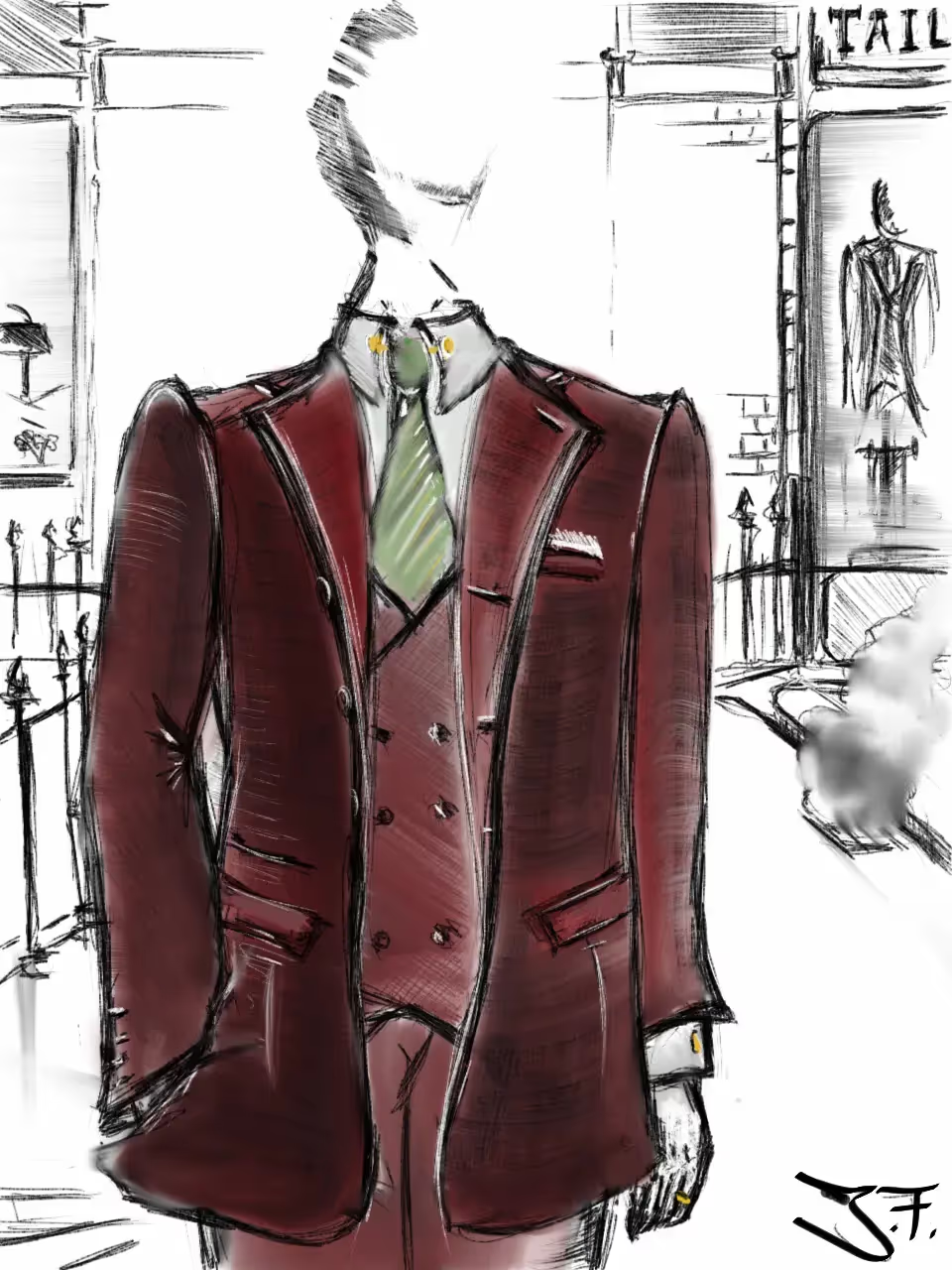Parisian Gentleman - © 2009-2020 - Mentions légales - Réalisé par HVLD digital

On occasion we like, at PG, to give younger readers an opportunity to express themselves.
Thus today we'd like to introduce you to Mr. John Frose, a Political Science and English Literature student from Bonn, Germany, who gives his perspective on how to draw closer to a universal language in suiting.
Talking about suiting can be convoluted with subjectivity and personal preferences. One way to bridge the gap between perceptions and reality is to educate yourself about the technical aspects of tailoring.
Here John offers a brief editorial about why education is worth the effort. To visit his blog and see the sartorial world through the eyes of the younger generation, see his Instagram account here.
__ __ __
Most everyone knows the paisley tie. While the paisley can remind an office worker of the days of disco, the exact tie can conjure perceptions of old southern charm or even European-colonial style inspired from the 1920s, -30s or -40s. To me, there is something to find in every era that is both iconic and expressive (even the despised 1980s gave us great pinstripes and terminology like the "power suit", which is not only an interesting idea in men's style, but a contemporary way of empowerment in womenswear). Today, if you fancy a paisley tie, your choices will be too numerous to count. Never before has there been so much variety and options for menswear (even on a budget). The current market seems to offer everything—available at your fingertips, and social media is overflowing with inspiration. If you know what you want, chances are someone out there will offer to bring your sartorial dream to life.
Alexander Freeling wrote in these columns about the iGent and the (Internet) Tailor, where he discusses modern man’s relationship with the internet. These click-of-the-keypad images allow us to dream of morphing into our own specific persona, often using these “images” as inspiration. I believe a person’s sympathy (or apathy) for a specific sartorial personality can directly influence his buying behavior, especially when cultural associations are involved (e.g., exposure to Savile Row, Pitti Uomo, Old Hollywood, or the Congo sapeurs). However, are these daydreams malformed? And how far off are the dreams the internet makes us dream, from reality itself?
This divide between expectations and reality is also relevant in the drinking culture. The popularity of classic cocktails like the Old Fashioned during this decade is inspired by a visual, aesthetic desire which can be met with a not-so-desirable reality.

"These images might speak to your different visions of elegance and perhaps remind you of something...like starting a conversation or an educational process of your own" ~John Frose
Older is not always better, and sometimes the reasoning behind the idea of inventing a cocktail is simply to make undrinkable alcohol somewhat drinkable by adding water, sugar and spices.
Let me bring a personal experience into our observation: Back when I was selling suits at a large department store in Germany, a customer requested something with a ‘vintage twist’. While I immediately thought of a clothing vibe hailing from the early 20th century, with rougher fabrics, more buttons, larger lapels and a waistcoat, the young customer just entering the business world, had a hankering for bold-checked patterns, a quirky bow tie and some clip-on suspenders. With this demographic of the newly corporate younger man, details such as buttons, pockets or cuffs can often pose a blind spot. In the end, we worked together to convey an “overall impression” of being stylishly vintage. With the realization of how differently we may think about the same subject, I wonder if there is a common ground among us? I think there is. The key may be shifting away from preconceived notions of “certain styles” and instead focusing, for example, on “handmade quality vs machine made quality”. If we focus on a pleasing article of clothing and learn how to examine and identify its quality, then a common ground for clear communication may result. Acquiring a bespoke piece is an experience which cannot be measured only in terms of price. It requires people with the necessary “cultural capital”, which is not the same thing as money.
A tailor will have the same problem which I experienced when the young man asked me to help him find something vintage, because we all have different perspectives when talking and thinking about clothing. When we approach a new tailor to decide upon an outfit, we hope he will understand our vision, but come to learn that we must also respect his vision (as he knows what is possible with our body types and will be biased toward his own house style).
The lapel of a 300 dollar suit was once able to speak to us. In the same vein, the lapel of a 3000 dollar suit is also able to speak to us, with a much louder voice. We can pay attention to both the cheap lapel and the well crafted lapel, in order to fully understand both and to be able to talk cohesively about one or the other.
Once a master tailor listens to our expectations and begins to translate them, he does so without going through a committee of designers, marketing researchers and executives—but by sheer knowledge and intuition of his craft. Tracing these points-of-knowledge and having an understanding for details is one of the most fun and exciting parts of sartorial men's style.
I hope you will learn the universal language of the technical side of suiting and merge that knowledge with the subjective "mood you want to create"—for education may be the magic pill which immeasurably enhances and expands the ambience of style itself.
Text and sketches by John Frose